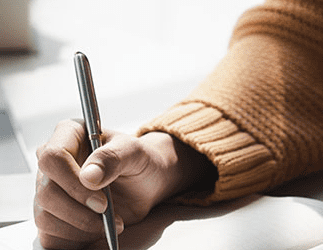
The field of psychotherapy is undergoing a revolutionary shift as researchers and clinicians alike begin to recognize the profound impact that prenatal development and birth experiences can have on an individual’s mental health and well-being throughout their entire lifespan. This exciting area of study is shedding new light on the complex interplay between early life experiences, trauma, and adult psychology, and offering promising avenues for more targeted, effective, and compassionate interventions.
Main Points and Key Ideas:
- Prenatal development and birth experiences have a significant impact on mental health throughout life.
- The birth process serves as a template for understanding separation and reunion dynamics in human experience.
- Stanislov Grof’s model of four perinatal stages describes the journey from womb to world as a transformative process.
- Birth trauma and prenatal experiences can shape adult psychology, personality traits, and relationship patterns.
- Trauma effects can be transmitted epigenetically across generations.
- Specific prenatal and birth experiences (e.g., vanishing twin syndrome, C-section) may influence psychological development.
- Understanding birth trauma can inform treatment approaches for adult PTSD and other mental health issues.
- Grof’s perinatal stages parallel Jung’s concept of alchemy and Campbell’s hero’s journey as models of transformation.
- Birth experiences (vaginal vs. C-section) may influence how individuals respond to trauma later in life.
- New therapeutic approaches like EMDR and Brainspotting are being developed to address early life traumas.
- This new understanding has implications beyond individual therapy, potentially informing prenatal care, intergenerational healing, and our relationship with the planet.
- The field calls for a more holistic, compassionate approach to mental health that recognizes the interconnectedness of all life experiences.
The Birth Process as a Template for Transformation
At the heart of this new frontier lies a powerful insight: the process of birth itself can serve as a rich template for understanding the universal dynamics of separation and reunion that play out on all levels of human experience, from the individual to the collective. As pioneering researcher Stanislov Grof has articulated in his groundbreaking model of the four “perinatal” stages of birth, the journey from the womb to the world is a profound and transformative one, involving a progression from blissful oneness, through an increasingly unbearable confinement, to a heroic struggle, and finally, a return to wholeness at a new level of being.
This template has far-reaching implications not only for individual psychology but for the evolution of our species as a whole. On a collective level, humanity itself may be undergoing a birthing process of sorts, as we bump up against the ecological limits of our planet and face the urgent need for a new way of living in harmony with nature. Just as the fetus must eventually outgrow the confines of the womb and enter a new world, so too must we as a species transcend our current paradigm of endless growth and consumption, and be born into a new era of sustainability, cooperation, and wisdom.
Grof’s Perinatal Matrix
BPM I (Basic Perinatal Matrix I) – Primal Union with the Mother:
This stage corresponds to the prenatal period, where the fetus experiences a sense of unity and oneness with the mother.
It is characterized by feelings of safety, comfort, and a lack of boundaries.
Positive experiences during this stage can contribute to a sense of trust and security later in life.
BPM II (Basic Perinatal Matrix II) – Antagonism with the Mother:
This stage relates to the onset of labor and the first stage of childbirth.
The fetus experiences increasing pressure, discomfort, and a sense of being trapped as the contractions begin.
Psychologically, this stage may be associated with feelings of anxiety, helplessness, and a struggle for survival.
BPM III (Basic Perinatal Matrix III) – Synergism with the Mother:
This stage corresponds to the second stage of childbirth, where the fetus actively participates in the birth process.
It involves a combination of intense pain, pressure, and a powerful drive to push through the birth canal.
Grof associated this stage with feelings of struggle, aggression, and a fight for liberation.
BPM IV (Basic Perinatal Matrix IV) – Separation from the Mother:
This final stage represents the actual moment of birth and the immediate postpartum period.
It is characterized by a sudden release of tension, a sense of relief, and a profound change in environment. Psychologically, this stage may be linked to feelings of liberation, independence, and a new beginning.
Grof believed that these perinatal experiences could leave imprints on an individual’s psyche, influencing their personality, emotional responses, and behavior throughout life. He developed a therapeutic approach called Holotropic Breathwork, which aims to help individuals access and process these deep-rooted experiences to promote psychological healing and personal growth.
The Role of Birth Trauma and Prenatal Development in Shaping Adult Psychology
On an individual level, the experience of birth itself can be a source of significant trauma, leaving imprints on the unconscious mind that can manifest in a wide range of psychological and physiological challenges throughout a person’s life. Pioneers in this field, such as Otto Rank and Stan Grof, have explored how the “birth trauma” can shape an individual’s deepest personality traits, relationship patterns, and existential fears, and have developed innovative therapeutic techniques, such as Holotropic Breathwork, to help individuals access and process these early memories in a safe and supportive context.
But birth is not the only critical period in shaping adult psychology. Recent research has also highlighted the profound importance of prenatal development in laying the foundation for future mental health. Studies have found that the effects of trauma can be transmitted epigenetically, through changes in gene expression that are passed down from one generation to the next. In other words, our earliest experiences, even those that occur before we are born, can have a significant impact on our psychological well-being and resilience.
For example, a groundbreaking study conducted in the aftermath of World War II found that the children and even grandchildren of Holocaust survivors were more likely to experience symptoms of post-traumatic stress disorder (PTSD), even if they had not directly experienced the trauma themselves. This suggests that the legacy of trauma can be carried forward through multiple generations, shaping the emotional and psychological landscape of families and communities in subtle but profound ways.
Other fascinating areas of research are shedding light on the ways in which specific prenatal and perinatal experiences can impact an individual’s development. The phenomenon of “vanishing twin syndrome,” in which a twin is absorbed by the other during early stages of gestation, has been found to occur in anywhere from 30 to 40 percent of pregnancies, and some experts believe that this experience may have subtle but significant effects on the surviving twin’s psychological makeup.
Similarly, studies have found that babies born via cesarean section (C-section) may have different sensory processing preferences and challenges compared to those born vaginally, possibly due to the abrupt transition from the womb to the outside world that occurs during a surgical birth. These findings suggest that even the subtlest differences in our earliest experiences can play a role in shaping our mental health and behavior throughout our lives.
Does Birth Trauma inform Adult PTSD:
One key insight from the study of birth trauma and perinatal stages is that the experience of birth itself can serve as a template for how an individual responds to stress and trauma later in life. For example, someone who experienced a prolonged, difficult labor or a traumatic birth may be more likely to feel overwhelmed or helpless in the face of stressful situations as an adult. By exploring a client’s birth history and any associated emotions or sensations, therapists can help them identify and process any unresolved trauma that may be contributing to their current symptoms.
Incorporating an understanding of Grof’s basic perinatal matrices (BPMs) into PTSD therapy can also provide a valuable framework for exploring the deeper layers of a client’s psyche. Each of the four BPMs corresponds to a specific stage of the birth process and is associated with particular psychological themes and challenges. By helping clients connect with the emotions and sensations associated with each BPM, therapists can support them in processing and integrating these early experiences in a way that promotes healing and growth.
For example, a client who is stuck in BPM II (Antagonism with the Mother), which is associated with feelings of being trapped, helpless, and overwhelmed, may benefit from therapeutic techniques that help them develop a sense of agency and control in their lives. This could involve practicing assertiveness skills, setting healthy boundaries, or learning relaxation and grounding techniques to manage feelings of anxiety or panic.
Similarly, a client who is grappling with themes related to BPM III (Synergism with the Mother), which involves a sense of struggle and a fight for liberation, may benefit from therapies that help them channel their aggression in healthy ways and develop a sense of empowerment and resilience. This could involve techniques such as art therapy, role-playing, or physical activities that allow them to express and release pent-up emotions in a safe and controlled environment.
In addition to informing specific therapeutic interventions, understanding the impact of birth trauma and perinatal stages can also help therapists approach PTSD treatment with greater compassion and sensitivity. By recognizing that a client’s current struggles may be rooted in experiences that occurred before they had conscious awareness or control, therapists can create a safe, non-judgmental space for exploration and healing. This can be particularly important for clients who may feel ashamed or guilty about their trauma responses, as it helps to normalize their experiences and validate their emotions.
Perinatal Stages in Therapy:
The perinatal stages described by Stanislav Grof share some interesting parallels with Carl Jung’s concept of alchemy and Joseph Campbell’s idea of the hero’s journey. All three models explore the process of transformation and the stages involved in psychological growth and self-discovery.
Jung’s concept of alchemy is a metaphorical framework for understanding the process of individuation, which involves the integration of the conscious and unconscious aspects of the psyche. According to Jung, this process is similar to the alchemical transformation of base metals into gold, with the individual undergoing a series of psychological stages to achieve wholeness and self-realization.
Similarly, Campbell’s hero’s journey is a universal narrative pattern that describes the stages of a hero’s adventure, from the initial call to adventure, through various trials and challenges, to the ultimate return home with newfound knowledge and wisdom. This journey can be seen as a metaphor for the process of psychological growth and transformation, as the individual confronts their fears, overcomes obstacles, and emerges with a deeper understanding of themselves and the world around them.
Grof’s perinatal stages can be seen as a specific application of these broader transformative models to the experience of birth and its impact on adult psychology. Just as the alchemical process and the hero’s journey involve a series of stages, each with its own challenges and opportunities for growth, Grof’s model suggests that the birth process itself is a transformative experience that can shape an individual’s psychological development.
In therapy, these models can provide a valuable framework for understanding the process of change and growth. Many therapeutic approaches, such as psychodynamic therapy, cognitive-behavioral therapy, and humanistic therapy, recognize that change often involves a series of stages or phases, each with its own challenges and opportunities for insight and transformation.
The birthing process is one of the most profound and transformative experiences in a person’s life, and growing evidence suggests that the way we come into the world can have lasting effects on our psychological development and our response to trauma as adults. One area where this connection has been explored is in the differences between vaginal birth and cesarean section (C-section) deliveries.
Research has shown that individuals born via C-section may be more sensitive to sudden changes in their environment, such as temperature fluctuations, different types of food, or unexpected light and noise. This sensitivity could be rooted in the abrupt transition from the womb to the outside world that occurs during a surgical birth, which doesn’t allow for the gradual adaptation that happens during a vaginal delivery.
This heightened sensitivity to sudden changes may also make individuals born via C-section more vulnerable to trauma later in life. For example, if they experience a car accident, the sudden impact and change in their environment may trigger a more intense traumatic response compared to someone who was born vaginally. The unexpected nature of the event and the rapid shift in their circumstances can echo the abrupt transition they experienced at birth, leading to a stronger psychological reaction.
In contrast, people who went through a vaginal birthing process might be less sensitive to sudden changes but more prone to feeling trapped or confined in situations that limit their control. The experience of moving through the birth canal, which involves intense pressure and a gradual journey to the outside world, may make these individuals more resilient to sudden changes. However, they may be more likely to feel distressed in situations where they feel constrained or unable to escape, as this can mirror the experience of being stuck in the birth canal during labor.
These differences in birth experiences and their potential impact on adult trauma responses highlight the importance of understanding an individual’s unique history when providing therapeutic support. By exploring a person’s birth story and any subsequent traumatic experiences, therapists can gain valuable insights into the underlying patterns and triggers that may be shaping their client’s emotional responses.
Incorporating this knowledge into treatment can help therapists develop more targeted and effective interventions. For example, for individuals born via C-section who have experienced a traumatic event involving sudden change, therapists may focus on strategies for coping with unexpected transitions and building resilience in the face of rapid shifts. This could involve techniques such as gradual exposure therapy, where the individual is slowly introduced to situations that evoke their traumatic response in a controlled and safe environment, allowing them to develop new coping mechanisms and emotional regulation skills.
For those born vaginally who have experienced trauma related to feeling trapped or controlled, therapy may focus on assertiveness training, boundary-setting, and strategies for managing feelings of helplessness or powerlessness. This could involve role-playing exercises where the individual practices advocating for their needs and desires, as well as mindfulness techniques for staying grounded and present in challenging situations.
Ultimately, recognizing the potential link between birth experiences and adult trauma responses can help therapists provide more compassionate, tailored, and effective care for their clients. By honoring the unique imprint of each individual’s entry into the world, therapists can support their clients in healing from past traumas and building greater resilience for the future.
However, it’s crucial to note that while birth experiences may influence an individual’s trauma response, they are just one of many factors that contribute to a person’s overall psychological makeup. Genetics, early childhood experiences, social support systems, and a host of other variables also play significant roles in shaping how an individual responds to and copes with traumatic events.
As such, therapists must take a holistic approach when working with clients who have experienced trauma, considering the full range of biological, psychological, social, and spiritual factors that may be influencing their emotional wellbeing. By offering a safe, non-judgmental space for exploration and healing, and by drawing on a diverse range of therapeutic tools and techniques, therapists can help their clients navigate the complex landscape of trauma and find new paths to resilience, growth, and wholeness.
Implications for Psychotherapy: A New Paradigm for Healing
As our understanding of the complex interplay between early life experiences, trauma, and adult psychology continues to deepen, psychotherapists are developing new approaches to treatment that address these root causes of mental health challenges. Cutting-edge therapies, such as EMDR (Eye Movement Desensitization and Reprocessing) and Brainspotting, have shown remarkable promise in helping individuals process and heal from traumatic memories, including those related to birth and prenatal experiences.
By recognizing the profound impact that these earliest experiences can have on a person’s emotional, psychological, and physical well-being, psychotherapists can develop more targeted and effective interventions that honor the full depth and complexity of the human experience. This may involve incorporating somatic therapies that work with the body’s own wisdom, trauma-informed approaches that prioritize safety and stabilization, and other techniques that help individuals access and integrate unconscious memories and sensations.
Some patients undergoing these therapies have reported experiencing strange bodily sensations or emotions that feel connected to their birth or prenatal experiences, even if they have no conscious memory of these events. Others may find themselves grappling with epigenetic fears or traumas that have been passed down through their family lineage, but feel unfamiliar or difficult to place. By creating a safe and supportive space for these experiences to emerge and be processed, psychotherapists can help individuals reconnect with their deepest selves and find new paths to healing and wholeness.
Beyond the Individual: Implications for Society and the Planet
The implications of this new frontier in psychotherapy extend far beyond the individual. By recognizing the ways in which our earliest experiences shape our collective psyche, we can develop a more compassionate and holistic approach to mental health care that addresses the root causes of suffering not only for individuals but for entire communities and societies.
This may involve developing new models of prenatal and perinatal care that prioritize the emotional and psychological well-being of both mother and child, and that recognize the importance of bonding, attachment, and safety in laying the foundation for lifelong mental health. It may also involve addressing the intergenerational transmission of trauma and working to heal the wounds of history that continue to shape our present-day realities.
At an even broader level, this new paradigm invites us to reconsider our relationship with the planet itself. Just as a mother’s womb provides a nurturing environment for the developing fetus, so too does the Earth provide the conditions necessary for all life to thrive. By recognizing the ways in which our own health and well-being are inextricably linked to that of the planet, we can begin to develop a new ethic of care and stewardship that honors the sacredness of all life.
A Call to Awakening
As we stand on the brink of a new era in psychotherapy and beyond, we are called to awaken to the profound interconnectedness of all things. By recognizing the ways in which our earliest experiences shape our minds, bodies, and lives, we can begin to heal the deepest wounds of our past and create a more compassionate and life-affirming future for ourselves and for generations to come.
This is the frontier of psychotherapy, and it is one that holds immense promise for our individual and collective transformation. As we continue to explore the mysteries of the human psyche and the depths of our shared experience, let us do so with open hearts and minds, ever-ready to be surprised and humbled by the wisdom that lies within us all. For it is only by embracing the fullness of our humanity, in all its complexity and beauty, that we can truly heal ourselves and our world.
Bibliography:
- Grof, S. (1985). Beyond the Brain: Birth, Death, and Transcendence in Psychotherapy. State University of New York Press.
- Rank, O. (1929). The Trauma of Birth. Kegan Paul, Trench, Trubner & Co.
- Jung, C. G. (1968). Psychology and Alchemy. Collected Works of C.G. Jung, Volume 12. Princeton University Press.
- Campbell, J. (1949). The Hero with a Thousand Faces. Pantheon Books.
- Yehuda, R., et al. (2016). Holocaust Exposure Induced Intergenerational Effects on FKBP5 Methylation. Biological Psychiatry, 80(5), 372-380.
- Shapiro, F. (2001). Eye Movement Desensitization and Reprocessing: Basic Principles, Protocols, and Procedures. Guilford Press.
- Grand, D. (2013). Brainspotting: The Revolutionary New Therapy for Rapid and Effective Change. Sounds True.
Further Reading:
- Chamberlain, D. B. (1988). Babies Remember Birth: And Other Extraordinary Scientific Discoveries About the Mind and Personality of Your Newborn. Jeremy P. Tarcher.
- Verny, T., & Kelly, J. (1981). The Secret Life of the Unborn Child. Dell.
- Levine, P. A. (1997). Waking the Tiger: Healing Trauma. North Atlantic Books.
- Van der Kolk, B. (2014). The Body Keeps the Score: Brain, Mind, and Body in the Healing of Trauma. Viking.
- Emerson, W. (1996). The Vulnerable Prenate. Journal of Prenatal & Perinatal Psychology & Health, 10(3), 125-142.
- Janov, A. (2011). Life Before Birth: The Hidden Script that Rules Our Lives. NTI Upstream.
- Siegel, D. J. (2012). The Developing Mind: How Relationships and the Brain Interact to Shape Who We Are. Guilford Press.
- Lipton, B. H. (2005). The Biology of Belief: Unleashing the Power of Consciousness, Matter & Miracles. Mountain of Love Productions.
- Porges, S. W. (2011). The Polyvagal Theory: Neurophysiological Foundations of Emotions, Attachment, Communication, and Self-regulation. W. W. Norton & Company.
- Laszlo, E. (2014). The Self-Actualizing Cosmos: The Akasha Revolution in Science and Human Consciousness. Inner Traditions.

Read More Depth Psychology Articles:
Taproot Therapy Collective Podcast
Anthropology























0 Comments